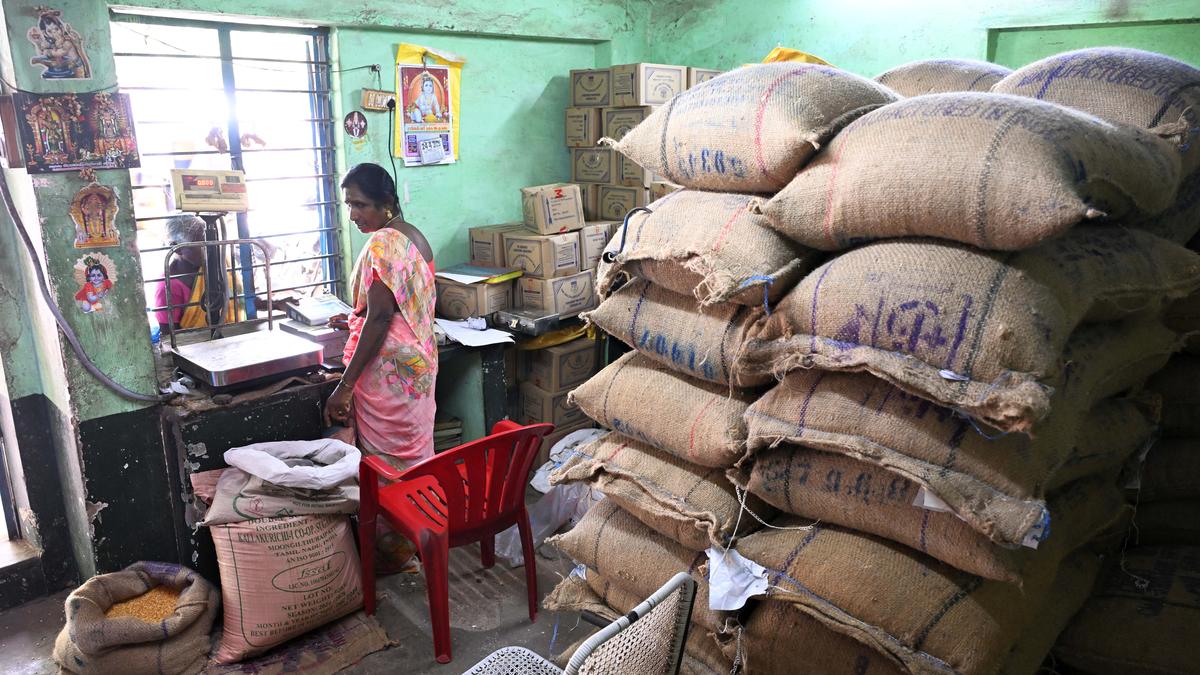State of Food Security and Nutrition in the World 2025

- 22 Aug 2025
In News:
According to the UN’s “State of Food Security and Nutrition in the World 2025”, global undernourishment decreased to 8.2% (673 million individuals) in 2024, down from 8.5% in 2023.
India has been instrumental in this turnaround—its prevalence of undernourishment fell from 14.3% (2020–22) to 12% (2022–24), equating to 30 million fewer hungry people. These outcomes underscore India’s unique role in advancing SDG 2: Zero Hunger globally.
Defining Hunger: Layers and Causes
- Undernourishment: Insufficient calorie intake.
- Malnutrition: Poor diet quality lacking protein and essential micronutrients.
- Hidden Hunger: Micronutrient deficiencies (iron, iodine, vitamin A, zinc).
Root Causes:
- Economic barriers: Poverty limits access to nutritious food (NITI Aayog Index: ~11.3% multidimensionally poor).
- Agricultural inefficiencies: Fragmented holdings, climate variability, poor irrigation, and 13% post-harvest losses.
- High food costs: A nutritious diet remains unaffordable for over 60% of Indians.
- Weak infrastructure: Poor cold storage and logistics aggravate food wastage.
- Health and sanitation challenges: NFHS-5 (2019–21): 35.5% of children under five are stunted; 19.3% are wasted.
- Macro-disruptions: Global conflicts, pandemics, and climate shocks affect food systems, impacting India too.
India’s Strategic Interventions: From Policies to Systems
- Public Distribution System (PDS) Reforms
- Extensive digital overhaul: Aadhaar-based targeting, biometric authentication, real-time inventory tracking, and ONORC (One Nation One Ration Card) ensuring portability and inclusion for migrants and the vulnerable.
- Served over 800 million beneficiaries during COVID-19—a monumental welfare scaling.
- Emphasis on Nutrition Over Mere Calories
- Continued unaffordability of healthy diets (60%+ can’t afford) due to price inflation and weak linkages.
- Nutrition-centric interventions:
- PM POSHAN (2021): Expanded mid-day meals into nutrition-sensitive programs.
- ICDS & POSHAN Abhiyaan: Enhanced focus on dietary diversity and maternal-child health.
- AnaemiaMukt Bharat: Tackles widespread anaemia among women and children.
- Agrifood System Transformation
- Promote nutrient-dense food affordability (pulses, fruits, vegetables, animal-source proteins).
- Address 13% food loss via upgraded cold-chain infrastructure and logistics.
- Support women-led enterprises and FPOs, especially in climate-resilient, biofortified crop cultivation.
- Digital Innovations in Agriculture: Tools such as AgriStack, e-NAM, and geospatial platforms enhance market access, planning, and transparency.
Strategies for Sustainable Impact
|
Strategy |
Actions |
|
Nutrition-centric policy shift |
Fortify staples, subsidise nutrient-rich foods (pulses, eggs, milk) |
|
Infrastructure strengthening |
Upgrade cold storage, logistics, and digital post-harvest systems |
|
Inclusive economy |
Scale women-led food enterprises, FPOs, and biofortified crop cultivation |
|
Digital expansion |
Broaden use of AgriStack, e-NAM, geospatial tools for planning & targeting |
|
Urban nutrition resilience |
Launch community kitchens, food banks, awareness drives |
|
Global sharing & leadership |
Replicate ONORC, PDS digitalisation, nutrition models in the Global South |
